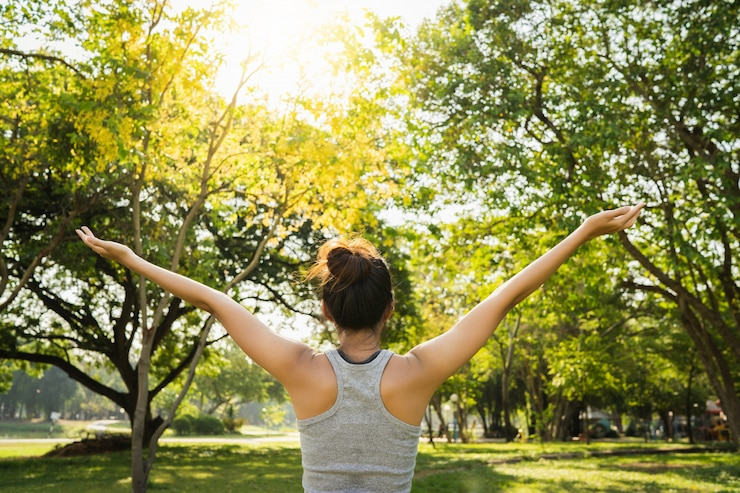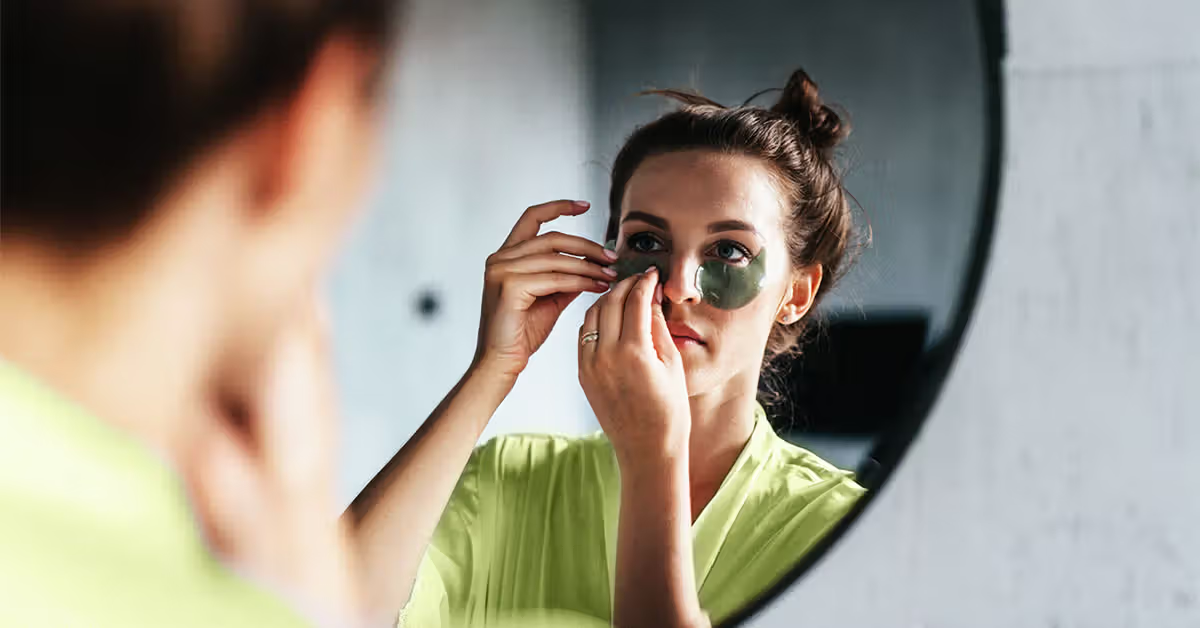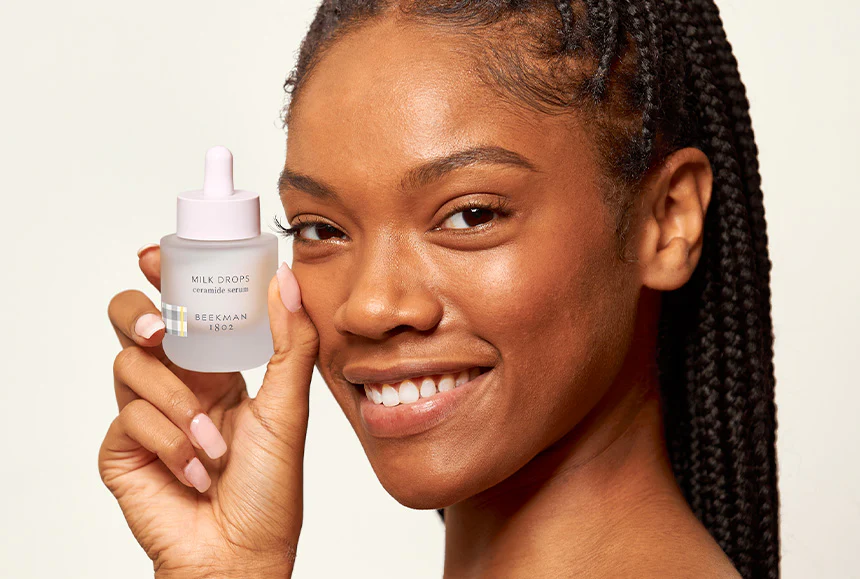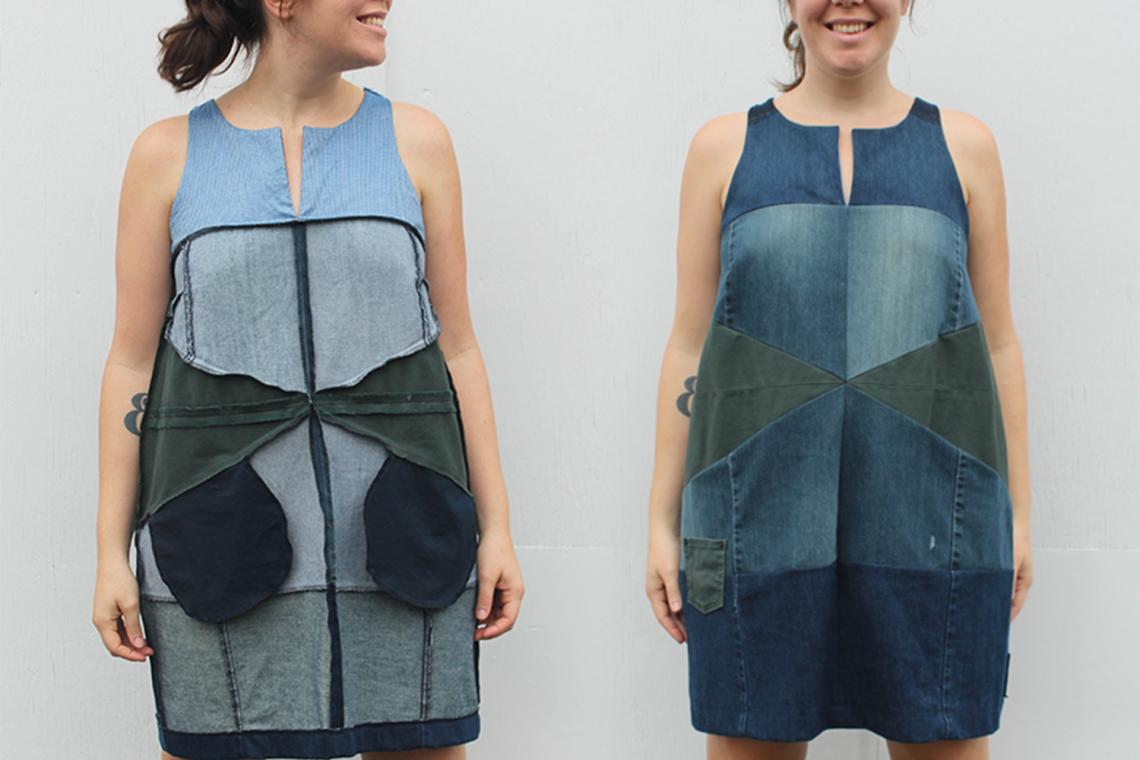Understanding Wellness: Ancient Wisdom for Modern Life
Have you ever wondered why some days you feel vibrant and alive, while others leave you drained despite being “healthy” on paper? That’s where wellness enters the picture – it’s so much more than just avoiding illness.
Wellness is the active pursuit of activities, choices, and lifestyles that lead to a state of holistic health. Unlike simply being free from disease, true wellness accepts a comprehensive approach to living well. It’s a journey rather than a destination – a dynamic process that evolves with you.
At its core, wellness is about intentional living. It’s making conscious choices that promote your optimal health across every dimension of your life. It’s preventive rather than reactive, focusing on enhancing your wellbeing before problems arise. And perhaps most importantly, it’s deeply personal – influenced by your unique environment, cultural background, and individual needs.
This concept isn’t new – our ancestors understood the importance of balanced living centuries ago. Ancient healing traditions like Ayurveda from India and Traditional Chinese Medicine have long emphasized preventive health practices and harmonious living. What’s fascinating is how these age-old wisdoms have evolved into a modern movement that now represents a $5.6 trillion global industry projected to grow at 8.6% annually through 2027.
The World Health Organization defines health as “a state of complete physical, mental and social wellbeing and not merely the absence of disease or infirmity.” Wellness builds on this foundation by highlighting our active role in creating that wellbeing across all dimensions of our lives.
“Wellness is an active process through which people become aware of, and make choices toward, a more successful existence.” – National Wellness Institute
Unlike healthcare that typically addresses problems after they appear, wellness takes a proactive stance. It encourages habits and choices that prevent issues before they start and improve your quality of life. Research shows about 40% of our daily behaviors are habits, making them crucial building blocks for wellness. And forming these positive habits takes time – an average of 66 days according to studies – highlighting why patience and consistency matter so much on your wellness journey.
For those of us who care about our planet (like you!), wellness extends beyond personal health. It accepts choices that support environmental sustainability and social wellbeing, creating a beautiful harmony between caring for ourselves and caring for our world.

What Is Wellness?
Wellness isn’t just a trendy buzzword—it’s a powerful concept that can transform how we live. According to the Global Wellness Institute, wellness is “the active pursuit of activities, choices and lifestyles that lead to a state of holistic health.” Notice the word “active”—wellness doesn’t happen to you; you create it through intentional choices every day.
Back in the 1950s, Dr. Halbert L. Dunn (often called the “father of the wellness movement”) described wellness as “an integrated method of functioning, which is oriented toward maximizing the potential of which the individual is capable.” He wasn’t just talking about avoiding sickness—he envisioned a vibrant, thriving existence where we reach our fullest potential in all aspects of life.
Here at Beyond Beauty Lab, we see wellness as a loving relationship with yourself—nurturing your body, mind, and spirit to help you become your personal best. It’s about making thoughtful choices that improve your overall health and bring more joy and meaning to your days.
The science backs this holistic view too. Research published in the National Library of Medicine confirms that wellness goes far beyond the absence of illness. It’s “a lifestyle and a personalized approach to living life in a way that allows you to become the best kind of person that your potentials, circumstances, and fate will allow.” In other words, wellness is about becoming the fullest version of yourself.
Why Wellness Is a Multidimensional, Active Process
Think of wellness as a beautiful mix with many different threads woven together. When one thread weakens, the entire fabric is affected. This is why true wellness spans multiple dimensions of our lives that constantly interact with one another.
For example, when you’re chronically stressed (emotional dimension), you might notice physical symptoms like headaches, your work may suffer (occupational dimension), and your relationships might become strained (social dimension). Everything is connected!
The active nature of wellness means it’s never “done”—it’s an ongoing journey that requires your attention and care. As the Global Wellness Institute points out, this journey is self-directed and influenced by three key factors:
Self-responsibility means taking ownership of your health choices rather than passively waiting for someone else to “fix” you. You’re the author of your wellness story.
Environmental influence recognizes that your surroundings—from your home to your workplace to your digital spaces—profoundly impact how you feel and function.
A proactive mindset shifts your focus from treating problems after they arise to preventing them in the first place through thoughtful daily choices.
This doesn’t mean you need to be perfect in all areas of your life (who is?). Instead, it’s about creating harmony among the different dimensions in a way that works for your unique circumstances and goals.
Wellness vs. Wellbeing vs. Happiness
Though we often use these terms interchangeably, they actually mean different things:
Wellness is the active, ongoing process we’ve been discussing—the conscious choices and activities you engage in to create optimal health across all dimensions of your life.
Wellbeing describes a more static state of being comfortable, healthy, or happy. The CDC defines wellbeing as “judging life positively and feeling good.” It’s a snapshot of how you’re doing right now.
Happiness is a temporary emotional state—those wonderful moments of joy, contentment, or satisfaction that come and go throughout your day.
While happiness may fluctuate with your circumstances and wellbeing captures your current state, wellness is the ongoing journey that creates the foundation for both. It’s the daily choices that gradually shape your life.
The World Health Organization’s definition of health as “complete physical, mental and social wellbeing” provides a solid starting point, but wellness takes this further by emphasizing that you’re not a passive recipient of health—you’re an active creator of it.
The Evolution of Wellness: From Ancient Traditions to a $5.6 Trillion Industry
The journey of wellness is a fascinating story that stretches back thousands of years. Far from being a modern invention, wellness practices have been woven into human cultures since ancient times.

Imagine ancient healers in India, around 3000 BCE, carefully balancing bodily doshas through Ayurvedic practices. At roughly the same time in China, practitioners were mapping the flow of qi through meridians, seeking harmony in the body’s energy. These weren’t just medical treatments—they were holistic approaches to living well.
The Greeks brought their own wisdom to the table, with Hippocrates famously advising, “Let food be thy medicine.” His approach emphasized balance, prevention, and natural healing—core concepts that still resonate in modern wellness philosophies.
Fast-forward to the 19th century, when natural healing movements swept through Europe and America. Water cures, clean air, and natural foods became popular alternatives to the harsh medical treatments of the day. These nature-based approaches planted seeds that would later blossom into our contemporary understanding of wellness.
The term “high-level wellness” didn’t appear until the 1950s, when Dr. Halbert Dunn described it as “an integrated method of functioning.” His vision went beyond merely avoiding illness—he saw wellness as actively pursuing your highest potential. This was thinking at a time when healthcare was primarily focused on treating disease.
The 1970s marked a turning point. John Travis opened the first wellness center in Mill Valley, California, creating a physical space dedicated to this emerging philosophy. Meanwhile, Dr. Bill Hettler developed his influential Six Dimensions of Wellness model, providing a framework that’s still taught today.
As wellness concepts spread through popular publications in the 1980s and 90s like Prevention magazine and the Berkeley Wellness Letter, what began as a fringe movement steadily entered the mainstream.
Today, wellness has transformed into a global economic powerhouse valued at $5.6 trillion. Industry experts project an impressive 8.6% annual growth through 2027. That’s not just impressive business growth—it represents a fundamental shift in how millions of people approach their health.
| Reactive Healthcare | Proactive Wellness |
|---|---|
| Focuses on treating symptoms | Focuses on preventing issues |
| Episodic, crisis-oriented | Continuous, lifestyle-oriented |
| Pathogenic (disease-focused) | Salutogenic (health-creating) |
| Primarily physician-directed | Self-directed with professional support |
| Addresses problems after they arise | Works to prevent problems before they occur |
| Emphasizes medication and procedures | Emphasizes lifestyle choices and habits |
Milestones That Shaped Modern Wellness
Several visionaries and organizations have helped transform wellness from a concept to a movement.
Dr. Halbert Dunn’s 1950s book “High-Level Wellness” was truly ahead of its time. While most healthcare professionals were focused on treating illness, Dunn was writing about optimizing health—a perspective that would take decades to gain widespread acceptance.
In the 1970s, Dr. Bill Hettler co-founded the National Wellness Institute and created the Six Dimensions of Wellness model. His framework helped people understand that true wellness requires attention to multiple aspects of life—not just physical health.
More recently, the Global Wellness Institute (formed in 2015) has brought scientific rigor to the industry through research and advocacy. Their work has helped define and measure the wellness economy, bringing credibility to a field sometimes viewed skeptically by traditional medicine.
The workplace has become an unexpected wellness frontier. Corporate wellness programs have dramatically expanded access to resources like fitness facilities, nutrition counseling, and stress management tools. The Affordable Care Act even provided funding for small business wellness initiatives, acknowledging their value to public health.
Today’s digital revolution has democratized wellness in unprecedented ways. Smartphone apps track our steps, wearable devices monitor our heart rates, and online platforms connect us with wellness experts worldwide. Information that was once available only to professionals is now literally at our fingertips.
At Beyond Beauty Lab, we honor these historical roots while bringing fresh perspective to wellness. We believe in blending ancient wisdom with modern science, creating approaches that feel both timeless and thoroughly contemporary.
Scientific research on wellness definition
The 8 Core Dimensions of Wellness
When we talk about wellness, we’re actually talking about a beautifully complex mix of eight interconnected dimensions. The Substance Abuse and Mental Health Services Administration (SAMHSA) has identified these core aspects that together create a complete picture of wellbeing:

Think of these dimensions as the different instruments in an orchestra. When they work in harmony, they create something beautiful—but even one instrument playing out of tune affects the entire performance. Perfect balance isn’t the goal (or even realistic!), but creating harmony among these dimensions helps us thrive rather than just survive.
At Beyond Beauty Lab, we’ve seen how holistic wellness creates the foundation for lasting beauty, inside and out. We explore this connection deeply in our article on Holistic Wellness: The Secret to Long-Lasting Beauty.
Let’s explore each dimension and find how they contribute to your overall wellness journey:
Physical Wellness
Physical wellness goes far beyond just “looking good”—it’s about giving your body what it needs to function at its best. This includes moving your body regularly in ways you enjoy, whether that’s dancing in your living room or training for a marathon. It means nourishing yourself with foods that provide energy and nutrients, getting those precious 7-9 hours of quality sleep, and taking preventive measures like regular check-ups.
Physical wellness also involves making mindful choices about substances like alcohol and tobacco. When you prioritize your physical health, you’ll likely notice improvements in your energy, immunity, appearance, and overall vitality. And here’s the beautiful ripple effect: those morning walks that boost your physical health? They’re simultaneously lifting your mood and emotional wellness too.
Emotional Wellness
Emotional wellness is your relationship with yourself—how you understand, express, and manage your feelings. It’s about building resilience for life’s inevitable challenges and maintaining a realistically positive outlook.
Developing strong emotional wellness means having healthy ways to cope with stress, building genuine self-esteem, and cultivating optimism even when things get tough. It’s about recognizing your emotions (yes, even the uncomfortable ones) and expressing them in ways that honor both yourself and others.
In our digital age, managing our relationship with technology has become a crucial part of emotional wellness. The constant notifications, comparison traps, and information overload can take a serious toll. We dive into this modern challenge in our article Digital Detox: A Wellness Reset for Your Mind and Skin.
Social Wellness
Humans are wired for connection—we quite literally need each other to thrive. Social wellness involves building and maintaining meaningful relationships with family, friends, colleagues, and community members. It’s about developing the communication skills to express yourself clearly and listen deeply to others.
Creating social wellness means establishing supportive networks you can lean on during difficult times and celebrate with during joyful ones. It involves developing cultural competence—appreciating diverse perspectives and backgrounds different from your own. And it requires the wisdom to set healthy boundaries that protect your energy while still remaining connected.
The research is clear: strong social connections correlate with longer lifespans, better mental health, and greater resilience during challenging times. As the saying goes, we rise by lifting others.
Intellectual Wellness
Your mind craves stimulation just as your body craves movement. Intellectual wellness involves engaging in activities that expand your knowledge, challenge your thinking, and spark your creativity. It’s about maintaining curiosity throughout your life and embracing the joy of learning new things.
Nurturing intellectual wellness means developing critical thinking skills that help you evaluate information (especially important in our era of information overload). It involves problem-solving, creative expression, and maintaining an open, inquiring mind that’s willing to consider different perspectives.
Whether you’re taking a cooking class, learning a new language, reading diverse books, or engaging in thoughtful debates with friends, these activities don’t just make life more interesting—they actually help maintain cognitive function as you age and contribute to your sense of purpose.
Spiritual Wellness
Spiritual wellness addresses our innate human need for meaning and purpose. Regardless of whether you follow a particular religious tradition, this dimension involves developing a set of guiding values and beliefs that bring coherence to your life.
Cultivating spiritual wellness means exploring what gives your life meaning, clarifying your core values, and finding ways to live in alignment with them. It often involves practices like gratitude, meditation, prayer, or simply spending time in quiet reflection. Many people find spiritual nourishment through connecting with nature, art, music, or community service.
At its heart, spiritual wellness helps answer the big questions: Why am I here? What matters most? How can I contribute? When we have a sense of purpose larger than ourselves, we gain perspective that helps us steer life’s challenges with greater grace.
Occupational Wellness
Since most of us spend roughly a third of our adult lives working, occupational wellness significantly impacts our overall wellbeing. This dimension involves finding personal satisfaction in your work and feeling that your contributions are meaningful and valued.
Building occupational wellness means seeking work that aligns with your values and interests, developing a healthy work-life harmony (balance is often elusive!), and continuously growing your skills. It involves proactive career planning and finding ways to bring your unique talents to whatever work you do.
Even if you’re not currently in your dream job, you can improve occupational wellness by identifying aspects of your work that do bring satisfaction, setting boundaries to protect your personal time, and taking steps toward future goals.
Environmental Wellness
The spaces where we live, work, and play profoundly affect our health and happiness. Environmental wellness involves understanding this connection and taking action to create surroundings that support your wellbeing while also protecting our shared planet.
Nurturing environmental wellness means creating safe, comfortable spaces that energize rather than drain you. It involves making eco-friendly choices when possible, managing your digital environment (those notification settings matter!), and finding ways to connect with nature regularly.
At Beyond Beauty Lab, environmental wellness is central to our philosophy—we believe that caring for your personal wellbeing and caring for our planet go hand in hand, which is why we’re committed to clean beauty and sustainable practices.
Financial Wellness
Money matters might not seem like a traditional wellness topic, but financial stress can ripple through every other dimension of your life. Financial wellness involves feeling satisfied with your current financial situation while also planning responsibly for the future.
Developing financial wellness means managing your resources effectively, understanding basic financial concepts, setting meaningful short and long-term goals, and aligning your spending with your values. It’s about creating a healthy relationship with money where it serves as a tool for wellbeing rather than a source of constant worry.
Small steps like creating a simple budget, building an emergency fund, reducing high-interest debt, or learning about investing can significantly improve your financial wellness—and by extension, reduce stress in other areas of your life.
The Wellness Continuum, Habits & Self-Regulation
Think of wellness as a journey rather than a destination. We all exist somewhere on a wellness continuum—a spectrum that ranges from serious illness on one end to vibrant, optimal health on the other. The beauty of this concept is that it reflects the reality of our lives: we’re constantly moving along this spectrum based on our choices, circumstances, and life events.
This continuum helps us understand three important truths about wellness. First, it’s dynamic—your position isn’t fixed but shifts throughout your life. Second, even small steps matter—moving just a little toward the wellness end can significantly improve how you feel. And third, prevention is powerful—the choices you make today can help maintain your position on the positive end of the spectrum.

Did you know that about 40% of what you do each day happens on autopilot? That’s right—nearly half of our daily behaviors are habits that run without conscious thought. This makes habits incredibly powerful shapers of our wellness journey. When healthy behaviors become automatic, wellness becomes much easier to maintain.
Charles Duhigg’s research on the “habit loop” gives us a practical framework for understanding how habits work. Every habit has three components: a cue (the trigger that starts the behavior), a routine (the behavior itself), and a reward (the benefit that makes the behavior worth repeating). Understanding this loop is like finding the control panel for your automatic behaviors.
If you’re wondering how long it takes to form a new habit, research published in the European Journal of Social Psychology has some encouraging news. While the old “21 days” myth has been debunked, the study found that on average, it takes about 66 days for a new behavior to become automatic. Of course, this varies widely depending on the person and the habit—some habits formed in as little as 18 days, while others took nearly a year.
At Beyond Beauty Lab, we’ve seen how daily rituals can transform wellbeing. Our article on Morning Wellness Rituals That Set the Tone for a Beautiful Day explores how morning practices can create a foundation for wellness that carries throughout your day.
Building Sustainable Wellness Habits
Creating lasting habits isn’t just about willpower—it’s about strategy. Think of willpower as a sprinter, not a marathon runner. To build habits that stick, you need systems that work with your brain rather than against it.
One powerful approach is habit stacking—attaching a new habit to one that’s already established. For example, if you already brush your teeth every night (established habit), you might add a quick gratitude practice right after (new habit). Your existing routine serves as the perfect cue for your new wellness practice.
Your environment plays a huge role too. Environment design means setting up your surroundings to make healthy choices easier. Want to drink more water? Keep a beautiful water bottle on your desk. Trying to meditate daily? Create a cozy corner with a cushion always ready for you.
Don’t underestimate the power of celebration. When you acknowledge your progress—even with something as simple as a mental “good job!”—you strengthen the habit loop by enhancing the reward. Your brain loves these little victories and will work to repeat behaviors that earn them.
For example, if you’re trying to establish a regular meditation practice, you might:
1. Use your morning coffee as a cue
2. Start with just 5 minutes of meditation (making it too small to fail)
3. Notice how calm you feel afterward (natural reward)
4. Track your streak in a journal (accountability)
5. Celebrate when you reach 30 consecutive days (extra reinforcement)
This approach works because it acknowledges how habits actually form in the brain, rather than relying solely on motivation, which naturally fluctuates.
Self-Regulation for Long-Term Wellness
Even with great habits in place, wellness requires self-regulation—the ability to manage your thoughts, emotions, and behaviors in service of your goals. While researchers have debated whether willpower is truly a limited resource (the “ego depletion” theory), most agree that making good choices becomes harder when we’re tired, stressed, or overwhelmed.
The good news is that you can set yourself up for success with strategies that make self-regulation easier. Implementation intentions are specific “if-then” plans that prepare you for obstacles. Instead of a vague intention like “I’ll exercise more,” you might decide, “If it’s Monday, Wednesday, or Friday at 7 AM, then I’ll do a 30-minute yoga session.”
I love the concept of temptation bundling—pairing something you need to do with something you enjoy. Only allowing yourself to listen to your favorite podcast while walking, for example, can make exercise something you actually look forward to.
Mindfulness practices strengthen your self-regulation muscles by creating space between stimulus and response. When you can observe your thoughts and feelings without immediately reacting, you gain the freedom to choose your response rather than being driven by automatic patterns.
Energy management is fundamental to self-regulation. Adequate sleep, nutrition, and recovery aren’t luxuries—they’re essential foundations that make everything else possible. When you’re well-rested and nourished, making healthy choices becomes significantly easier.
These strategies help safeguard your mental energy and make your wellness journey sustainable for the long haul. After all, true wellness isn’t about perfect days—it’s about consistent choices that gradually move you toward greater health, happiness, and fulfillment.
Applying Wellness Across Settings: Workplace, Schools & Communities
The beauty of wellness is how adaptable it is—these principles can transform any environment into a space that nurtures health and wellbeing. From corporate offices to elementary schools to neighborhood initiatives, wellness practices create ripple effects that benefit everyone involved.
Workplace Wellness Best Practices
Remember when workplace wellness meant just a fruit bowl in the break room? Those days are long gone! Today’s workplace wellness has blossomed into a $61.2 billion global market as companies recognize that healthy employees aren’t just happier—they’re more productive, engaged, and loyal.
The most effective workplace wellness programs share some key characteristics. They’re inclusive, ensuring everyone can participate regardless of their current health status or abilities. They offer choice, understanding that a one-size-fits-all approach simply doesn’t work when it comes to personal wellbeing. They address multiple dimensions of wellness, going beyond just physical health to nurture emotional, social, and even financial wellbeing.
The best programs also create genuine cultural change—wellness becomes woven into the company’s DNA rather than feeling like an add-on program. And smart employers measure outcomes, tracking not just participation but actual improvements in health metrics and employee satisfaction.
The Equal Employment Opportunity Commission (EEOC) distinguishes between two types of workplace wellness approaches:
Participatory programs reward employees simply for joining in, like offering gym membership subsidies or meditation classes, with no health outcomes required. These tend to feel more inclusive and less invasive.
Health-contingent programs provide incentives based on achieving specific health outcomes—think lower insurance premiums for maintaining healthy blood pressure or for non-smokers. While potentially motivating, these programs require careful implementation to avoid discrimination concerns.
Beyond the obvious health benefits, many organizations report tangible business advantages: reduced absenteeism, improved productivity, and better employee retention. While exact return on investment varies, the culture shift toward wellness often proves invaluable in ways that can’t always be measured in dollars.
Looking for tools to support your personal wellness journey? At Beyond Beauty Lab, we’ve done the research for you in our Wellness Tools We Swear By: A Curated List for Everyday Use.
Community & School Wellness Models
When wellness extends beyond individual efforts into community spaces and schools, the impact multiplies exponentially.
Community-based wellness initiatives create beautiful synergy. Community gardens don’t just provide fresh produce—they foster physical activity, nutrition education, and meaningful social connections. Walking groups combine the benefits of movement with the power of friendship and accountability. Resource sharing programs address financial wellness by stretching dollars further through tool libraries or clothing swaps.
Communities that prioritize wellness also invest in mental health awareness campaigns to reduce stigma and increase support. And environmental clean-up projects nurture our connection to nature while creating healthier spaces for everyone—a win-win for environmental wellness.
In school settings, wellness takes on special importance as we help shape healthy habits for a lifetime. Effective school wellness models incorporate comprehensive health education that touches on all wellness dimensions, not just physical health. They provide physical activity opportunities throughout the day, understanding that movement improves learning and mood.
Schools committed to wellness also implement nutrition standards for meals and snacks, knowing that growing bodies and brains need proper fuel. Many now include social-emotional learning curricula to help students develop self-awareness, empathy, and healthy relationship skills. And school-based health centers ensure that care is accessible right where students spend their days.
Digital tools have revolutionized wellness across all these settings. From workplace wellness apps that gamify healthy habits to school mindfulness programs delivered via tablet to community resource platforms connecting neighbors in need—technology has made wellness more accessible than ever.
By applying wellness principles across different environments, we create a culture where healthy choices become the easy choices. At Beyond Beauty Lab, we believe true beauty flourishes when we nurture wellbeing in every aspect of our lives and communities.
Criticisms, Controversies & Inclusive Future of Wellness
Despite its many benefits, the wellness movement isn’t without its share of valid criticisms and controversies. At Beyond Beauty Lab, we believe in taking an honest look at these challenges as we work toward a more inclusive wellness future.
The wellness industry has sometimes been criticized for promoting practices and products that lack solid scientific backing. From crystal healing to detox cleanses with exaggerated claims, this blurry line between evidence-based practices and pseudoscience can confuse consumers and potentially lead to harmful choices.
Perhaps more concerning is the concept of “healthism”—the perspective that views health as primarily an individual responsibility and moral obligation. This mindset can create unnecessary pressure and shame while conveniently ignoring the social, economic, and environmental factors that significantly impact our health. When we focus exclusively on personal choices, we risk blaming individuals for health challenges that may have deeper structural causes.
In workplace settings, some wellness programs have raised disability rights concerns. When programs penalize employees who cannot meet certain health standards or participate in specific activities, they may inadvertently discriminate against people with disabilities or chronic conditions. This undermines the inclusive spirit that should be at the heart of true wellness.
The COVID-19 pandemic highlighted another troubling trend: the intersection of wellness culture with conspiracy theories, sometimes called “conspirituality.” Some wellness influencers became unexpected vectors for health misinformation, using their platforms to spread questionable claims about vaccines or treatments, blurring the lines between legitimate health concerns and unfounded fears.

Making Wellness Accessible to All
For wellness to truly fulfill its potential, it must be inclusive and accessible to everyone—not just those with financial privilege, certain body types, or specific abilities.
Affordability remains a significant barrier for many. When wellness is marketed primarily through expensive products, exclusive retreats, and premium services, it becomes a luxury rather than a basic right. We need more community-based, low-cost wellness options that everyone can access.
Representation matters tremendously in wellness spaces. When marketing materials consistently feature only young, thin, able-bodied individuals (often white women in expensive yoga wear), it sends a message about who belongs in wellness spaces. Diverse bodies, backgrounds, abilities, and ages should be visible and celebrated in all wellness contexts.
Cultural relevance is essential for meaningful wellness practices. Rather than appropriating traditions from various cultures without context or respect, the wellness industry should honor diverse cultural approaches to wellbeing and include practitioners from those cultures. Many wellness practices have roots in traditional healing systems that deserve recognition and respect.
Physical accessibility is non-negotiable. Wellness spaces and programs should accommodate various abilities and needs, from wheelchair-accessible facilities to modified exercise options to sensory-friendly environments. Digital wellness resources should follow accessibility guidelines to ensure everyone can benefit.
Responding to Wellness Skepticism
At Beyond Beauty Lab, we believe in an evidence-based approach to wellness that acknowledges complexities and avoids oversimplified solutions. We’re committed to:
Making transparent claims supported by research whenever possible, while being honest about areas where the evidence is still emerging. Not every traditional practice has been studied extensively, but that doesn’t automatically invalidate its potential benefits.
Acknowledging the limits of current knowledge and being willing to update our understanding as new information emerges. Wellness is an evolving field where dogmatic certainty rarely serves anyone well.
Respecting both scientific evidence and traditional wisdom, recognizing that these knowledge systems can complement rather than contradict each other. Many scientific breakthroughs have roots in traditional practices that were observed to be effective long before they were studied in laboratories.
Recognizing structural barriers to wellness and advocating for systemic changes that make healthy choices more accessible to everyone. Individual habits matter, but so do policy, environment, and community support.
We believe the future of wellness lies in finding balance—between individual practices and community support, between ancient wisdom and modern research, between personal responsibility and structural change. True wellness isn’t exclusive or elitist; it’s a fundamental right that should be available to everyone, regardless of income, ability, or background.
By acknowledging these criticisms and working to address them, we can help shape a wellness movement that truly serves everyone’s wellbeing—not just those with the most privilege and resources.
Frequently Asked Questions about Wellness
What’s the quickest way to assess my current wellness level?
When you’re curious about your wellness status, you don’t need fancy tools to get started. A simple but effective approach is giving yourself a quick rating in each dimension on a scale from 1-10. Think of it as a personal check-in—where are you thriving, and where might you need some extra attention?
Ask yourself honest questions about how you’re really doing:
“Do I wake up with enough energy to tackle the day?” (Physical)
“How well am I handling life’s inevitable stressors?” (Emotional)
“Do my relationships nourish me or drain me?” (Social)
“When was the last time I learned something new just because it fascinated me?” (Intellectual)
“Does my life feel meaningful and aligned with my values?” (Spiritual)
“Does my work feel fulfilling or just something I endure?” (Occupational)
“Do my surroundings support my health and happiness?” (Environmental)
“Can I sleep at night without money worries keeping me awake?” (Financial)
Your answers will illuminate which areas might benefit from more care. If you’re looking for something more structured, the National Wellness Institute offers comprehensive self-assessment tools online that can provide deeper insights.
How do the dimensions of wellness influence one another?
The beauty of wellness is how wonderfully interconnected all its dimensions are—like an ecosystem where each part affects the whole. Nothing exists in isolation.
Think about how your physical wellbeing impacts your emotional state. After a good workout, you might notice your mood lifting as endorphins flood your system. Or consider how financial stress can follow you to work, affecting your concentration and performance.
We see these connections everywhere: the friend who joined a spiritual community and found not just purpose but also meaningful social connections; the person who improved their home environment with plants and natural light and noticed their physical health improving; or the continuous learner whose intellectual curiosity opened doors to new career opportunities.
This interconnectedness is actually good news! It means small positive changes can create ripple effects across multiple dimensions of your life. Improving just one area often naturally improves others, creating an upward spiral of wellbeing. That’s why at Beyond Beauty Lab, we advocate for holistic approaches rather than isolated fixes.
What’s the difference between proactive wellness and reactive healthcare?
Imagine two different paths to the same destination of health. Proactive wellness is like maintaining your car regularly—checking the oil, rotating the tires, and addressing small issues before they become big problems. Reactive healthcare, by contrast, is waiting until the car breaks down on the highway before calling for help.
Proactive wellness puts you in the driver’s seat. It’s about making daily choices that support your health—nourishing foods, regular movement, stress management techniques, and cultivating meaningful connections. It’s woven into the fabric of your everyday life rather than something you think about only when problems arise.
This approach empowers you through education and self-awareness. It looks at root causes rather than just symptoms and considers all dimensions of your being—not just the physical. Most importantly, it’s ongoing rather than episodic.
Reactive healthcare certainly has its place—we all need medical intervention sometimes. When you break a bone, develop pneumonia, or face a serious health crisis, skilled healthcare providers and modern medicine are invaluable.
The wisest approach combines both: embracing proactive wellness practices to prevent issues where possible while appreciating that appropriate medical care remains essential for many conditions. At Beyond Beauty Lab, we believe these approaches complement each other beautifully in creating a foundation for vibrant living.
Conclusion
The journey of wellness is exactly that—a journey, not a final destination. It’s an active, ongoing process where we make daily choices that support our health and wellbeing across every dimension of our lives. From ancient healing traditions to today’s modern applications, wellness offers us a thoughtful framework that emphasizes prevention over cure, personal responsibility over passive care, and whole-person health over symptom management.
Think of the eight dimensions of wellness—physical, emotional, social, intellectual, spiritual, occupational, environmental, and financial—as your personal roadmap. These interconnected aspects of life don’t exist in isolation; they constantly influence and improve one another. When your financial stress decreases, your emotional wellbeing often improves. When your physical health strengthens, your intellectual capacity typically expands. This beautiful interconnectedness means that small improvements in one area can create positive ripples throughout your entire life.
Creating lasting wellness habits isn’t about perfect performance or radical lifestyle overhauls. It’s about understanding your habit loops, making tiny sustainable changes, and using self-regulation strategies that work with your life rather than against it. Whether at work, school, or in your community, these principles can transform not just your personal experience but the environments you inhabit.
As the wellness movement continues to evolve, we must acknowledge its criticisms while working toward a more inclusive, evidence-based approach. True wellness isn’t a luxury product or a privilege for the few—it’s a fundamental right that should be accessible to everyone, regardless of background, ability, or resources.
At Beyond Beauty Lab, we deeply believe that authentic beauty emerges naturally from holistic wellness. When you nurture yourself from the inside out, you create a harmony that radiates in ways no product alone could achieve. Your skin glows differently when you’re well-rested. Your eyes shine brighter when you’re fulfilled. Your presence becomes magnetic when you’re at peace.
Ready to take a meaningful step forward? Consider spending a quiet evening this week reflecting on each wellness dimension in your life. Where do you feel most satisfied? Where might you benefit from more attention? Choose just one small area for focused care, and implement a single, sustainable habit to support it. Wellness isn’t about perfection—it’s about conscious choices that gradually improve your quality of life, one day at a time.
For more inspiration and practical guidance on your wellness journey, explore Beyond Beauty Lab’s Wellness Category. We’re here to support you every step of the way.








